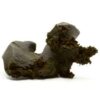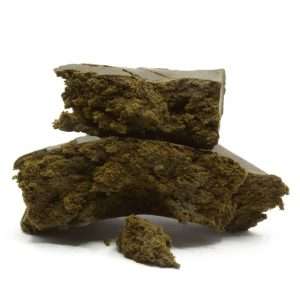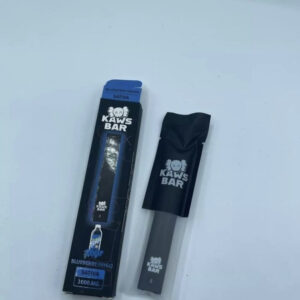Hashish is a cannabis concentrate product composed of compressed or purified preparations of stalked resin glands, called trichomes, from the plant. It is defined by the 1961 UN Single Convention on Narcotic Drugs (Schedule I and IV) as “the separated resin, whether crude or purified, obtained from the cannabis plant”. The resin contains ingredients such as tetrahydrocannabinol (THC) and other cannabinoids—but often in higher concentrations than the unsifted or unprocessed cannabis flower. Purities of confiscated hashish in Europe (2011) range between 3% and 15%. Between 2000 and 2005, the percentage of hashish in cannabis end product seizures was at 18%.With the strength of unprocessed cannabis flowers having increased greatly in recent years—with flowers containing upwards of 25% THC by weight—the strength of hashish produced today and in the future is likely to be far more potent than in these older records.
The consistency and appearance of hashish is highly dependent on the process used and the amount of leftover plant material (e.g. chlorophyll). It is typically solid, though its consistency ranges from brittle to malleable. It is most commonly light or dark brown in color, though may appear transparent, yellow, black, or red.
Smoke bongs
Users do this mix by mixing the drug with tobacco and putting it in a pipe, lighting it, and then inhaling the smoke through water out of a large tube. There are many types of bongs, and not everyone uses tobacco. Like with joints, using tobacco in bongs increases the risk of nicotine dependence.
Edibles you can eat or drink
People do this by mixing it into cakes (hash brownies), tea, yoghurt or sweets (gummies/lollipops). The amount of cannabis in these products can vary greatly and sometimes – especially in sweets – other harmful drugs (particularly synthetic cannabinoids) are added or used instead. The effects of consuming edibles are unpredictable and it can be very easy to accidentally take a larger dose than you wanted to.
| Quantity | 5grams, 10grams, 20grams, 50grams |
|---|
Be the first to review “Bubble Gum Flavored Hash” Cancel reply
Related products
Cannabis Hash
THC disposable Vape Pen
Cannabis Hash
Cannabis Concentrate
Cannabis Hash
Buy THC Vape pens online
Cannabis Hash
Cannabis Hash












Reviews
There are no reviews yet.